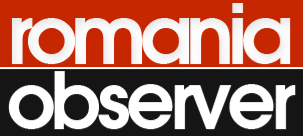A perfect storm of government policy, consumer trends and technology is accelerating the energy transition. And while much of the discussion centers around renewables and infrastructure, it mostly overlooks the customer. EY has conducted a survey of 34,000 energy consumers across 17 countries to understand their shifting needs, values and expectations and the results present compelling opportunities for energy providers willing to reshape their business, according to the new report, Navigating the Energy Transition Consumer Survey. Mihai Draghici, Director, Consulting, EY Romania: “While cost remains the most critical factor in driving purchase decisions for current adopters this by itself will not drive long term success. Our research suggests that a focus on six strategic imperatives can help energy providers reshape to build a people-centered, technology-enabled business that engages consumers and increases new services adoption and retention. The findings are especially relevant in the context of the Romanian energy prices full liberalization.” 1.Rise of the “omnisumer” Ninety-two percent of those surveyed have at least one new energy-related product or service in their home, 86% are interested in self-generation, 25% are considering an EV, and 13% are thinking about installing battery storage in the next three years. This combination of growing interest and increasing adoption of energy solutions is fundamentally changing the industry’s historical relationship with largely passive energy users. We are seeing the rise of a new more active and engaged type of consumer – the “omnisumer”. This is a person or business entity who participates in a dynamic energy ecosystem across a multitude of places, solutions and providers. With the rise of a new type of energy consumer – the “omnisumer” – demand for simple, but sophisticated, end-to-end solutions and integrated experiences will become the new basis for effortless engagement. Those energy providers that rapidly develop a mature, yet simplified ecosystem, in which “omnisumers” can exchange value, will win in the market. 2.Sustainability The survey reveals that consumers show significant interest in adopting new energy products and services when the benefits are aligned around three core areas: saving money, saving time, saving the planet. While cost (53%) remains the most critical factor in driving purchase decisions for current adopters, impact on the environment (47%) and making life easier (34%) are also important. These factors are even more important for consumers considering purchases in the next three years with cost being critical to 67% of respondents, environment to 51% and convenience to 36%. 3.@home workers The COVID-19 pandemic accelerated a major shift in how we work and live, creating a new segment of residential customers who act much more like a small business. Sixty-four per cent of consumers who reported they were working from home checked their energy consumption at least once a month (12% higher than average), and 70% were interested in energy efficiency solutions (8% higher than average). Energy providers that better understand this new segment can elevate the relationship by proactively engaging with tailored tariffs and energy solutions for those who are now permanently working and educating from home. 4. Digital by default The survey found that consumers prefer digital for 8 out of 10 primary interactions with their energy provider, but still want the human touch when making a complaint, managing an outage or emergency, or facing an issue with digital channels. However, 62% have experienced a problem using their energy provider’s digital service and 37% are not confident in their energy providers’ digital services, a figure which increases to 50% for Gen Z. While digital enablement is clearly a critical focus area for energy providers, the seamless integration with human interaction is also part of the future engagement mix. 5. My energy, my way As of 2020, millennials and Gen Z became the largest demographic in the world. These consumers are more energy-engaged, about twice as likely to monitor their energy on a weekly basis and strongly prefer to pay-in-advance or pay-as-you go – 50% of this demographic say these are their preferred energy options. With more experience with other providers, younger consumers like the financial control and payment convenience that comes with this approach. 6.Green expectations Consumers are increasingly aware of sustainability issues and are holding energy providers to a high standard. Sixty-four per cent say getting sustainable products and services “right” is critical, 36% are willing to pay more for them, but only 54% say they are satisfied with those currently offered. When asked what energy providers need to do to demonstrate their commitment to sustainability, expectations include providing new energy products and services (52%), supporting local sustainability programs (50%), offering green energy solutions (50%) and operating a green fleet (27%).

